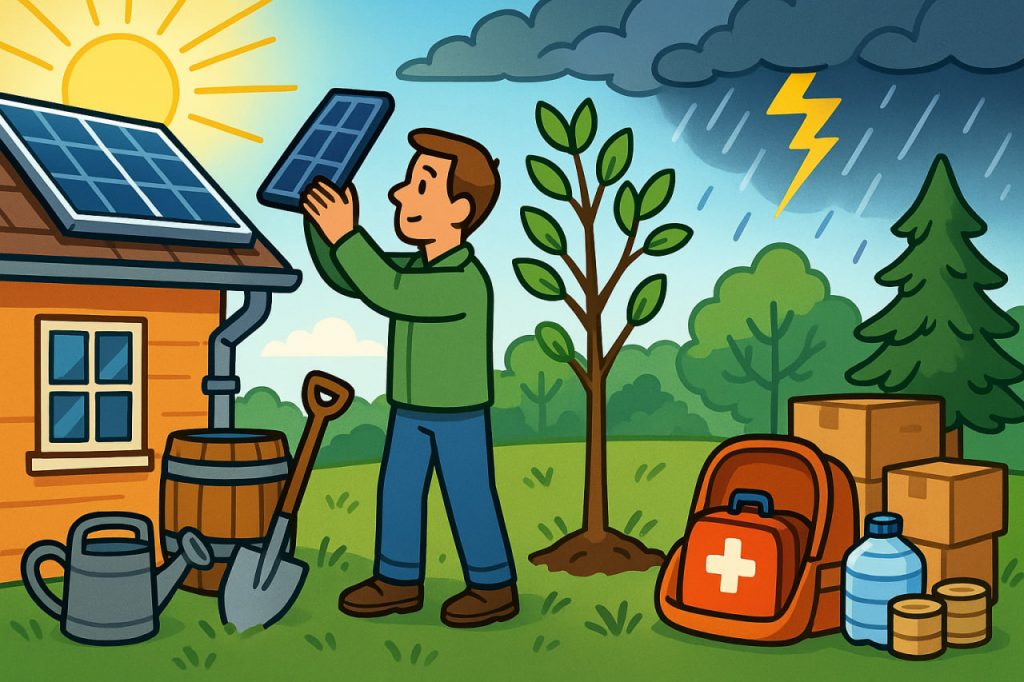In an era defined by rising global temperatures, extreme weather events, and environmental instability, adapting to the realities of climate change is no longer a distant concern — it is a personal and collective necessity. Scientists warn that floods, droughts, storms, and heatwaves will become more frequent and intense, threatening food security, infrastructure, and health. However, individuals and communities can still take meaningful steps to prepare, adapt, and mitigate the effects of these changes.
Understanding the Scale of Climate Challenges
The climate crisis affects nearly every aspect of human life. Melting polar ice raises sea levels, threatening coastal cities. Desertification reduces arable land, while wildfires and hurricanes destroy homes and ecosystems. The frequency of natural disasters has increased by more than 80% in the past four decades, according to UN data.
Preparing for these challenges begins with awareness — understanding how climate patterns are shifting locally and globally and what that means for your region.
Strengthening Home and Community Resilience
Every household can become more resilient to climate extremes with practical preparation:
- Flood readiness: Elevate valuable items, install backflow valves, and prepare emergency kits with essentials.
- Heat protection: Use thermal insulation, reflective window films, and indoor plants to reduce indoor temperature naturally.
- Fire safety: Maintain clear zones around homes in fire-prone areas, keep fire extinguishers, and stay informed on evacuation routes.
- Energy independence: Solar panels, battery systems, or small renewable generators can provide backup power during outages.
Communities can enhance resilience through green infrastructure — urban trees, green roofs, and permeable pavements that absorb heat and reduce flooding.
Sustainable Lifestyle Choices
One of the most powerful tools for climate adaptation is reducing individual environmental impact. Key actions include:
- Lowering carbon footprints — walk, bike, or use public transport whenever possible.
- Energy efficiency — switch to LED lights, insulate homes, and unplug idle devices.
- Waste reduction — practice recycling, composting, and limit single-use plastics.
- Sustainable diet — consume more plant-based foods and support local agriculture.
These small, consistent choices, multiplied across billions of people, can slow the pace of global warming.
The Importance of Water and Food Security
Climate change disrupts rainfall patterns, leading to both droughts and floods. To prepare:
- Store rainwater where legal and practical.
- Grow drought-resistant crops or maintain small home gardens.
- Stock emergency food and water supplies for at least two weeks.
- Support innovations like vertical farming and hydroponics to secure future food sources.
Mental and Physical Preparedness
Climate anxiety — a growing phenomenon — can lead to stress and hopelessness. It’s important to remain mentally resilient:
- Focus on solutions rather than fear.
- Join volunteer or environmental groups, turning worry into action.
- Maintain physical health through regular activity, a balanced diet, and proper hydration — essential during heatwaves or emergencies.
Investing in Education and Technology
Knowledge is one of the strongest defenses against uncertainty.
Learn about climate science, emergency response, and renewable technologies. Encourage children to understand sustainability early. Support technological innovations like smart grids, AI-based disaster prediction — tools that can reshape the future.
Global Cooperation for a Safer Planet
No individual can solve the climate crisis alone. Global collaboration is crucial — between nations, organizations, and citizens. Each person who acts — whether by conserving water, planting trees, or spreading awareness — contributes to a global movement of resilience and renewal.
P.S. Climate is our common enemy, and only by uniting as humanity can we confront it. Now is the time for everyone to do their part in helping people and society.
Interesting Facts
- Between 2000 and 2020, the number of extreme heat events doubled worldwide.
- Reforestation and soil restoration could absorb up to 30% of global CO₂ emissions annually.
- Urban green spaces can lower city temperatures by up to 5°C during heatwaves.
- Every dollar invested in disaster prevention saves up to seven dollars in future recovery costs.
- Nations with strong local volunteer networks recover faster from climate-related disasters.
Glossary
- Climate resilience — the ability of systems and communities to recover from climate shocks.
- Carbon footprint — the total greenhouse gas emissions caused by an individual or organization.
- Green infrastructure — nature-based solutions like trees and wetlands that support climate adaptation.
- Renewable energy — power sources like solar, wind, and hydro that produce little or no emissions.
- Sustainability — using resources in a way that preserves them for future generations.


